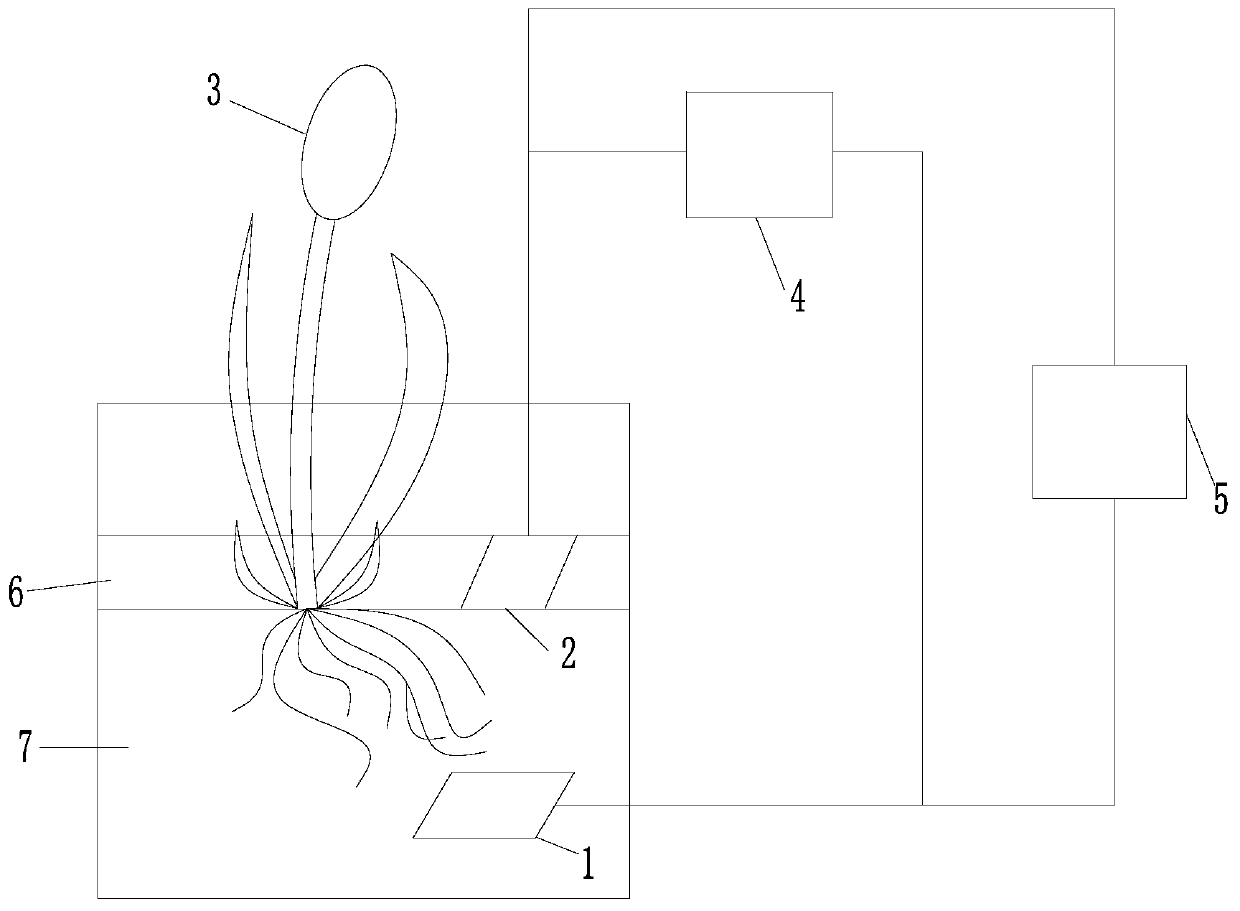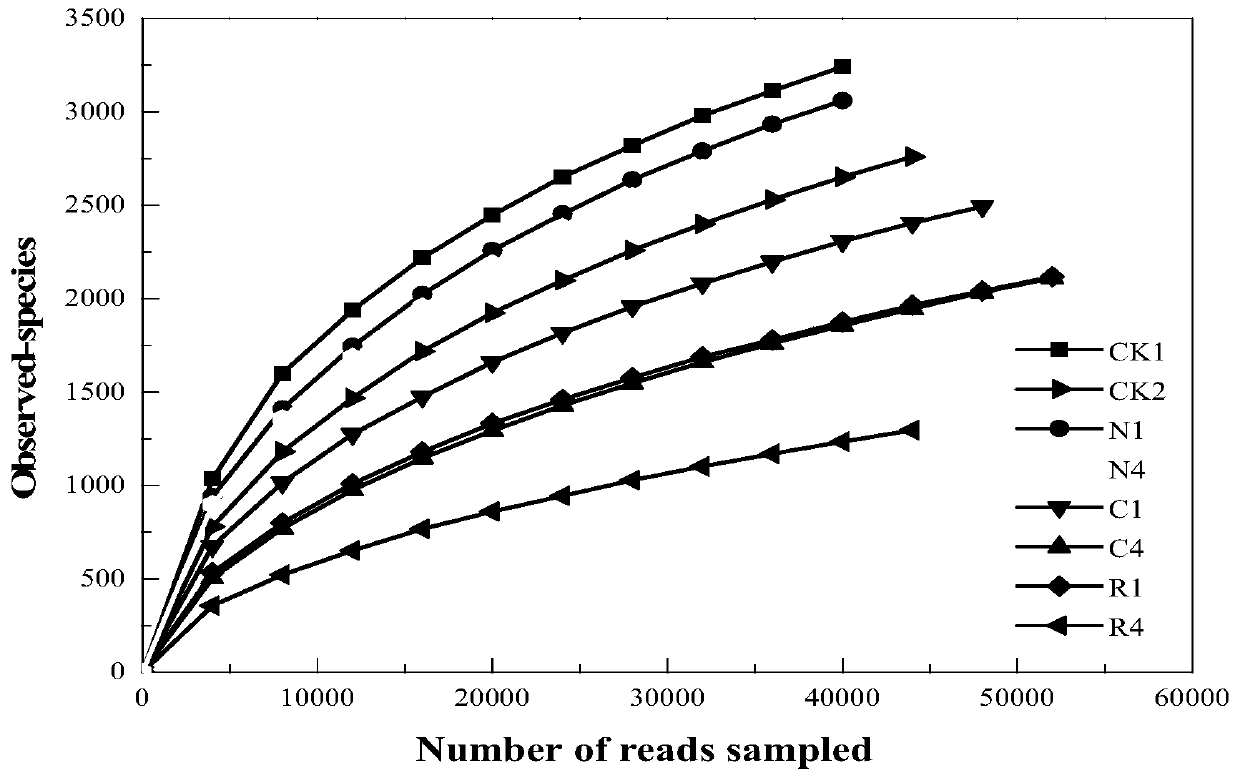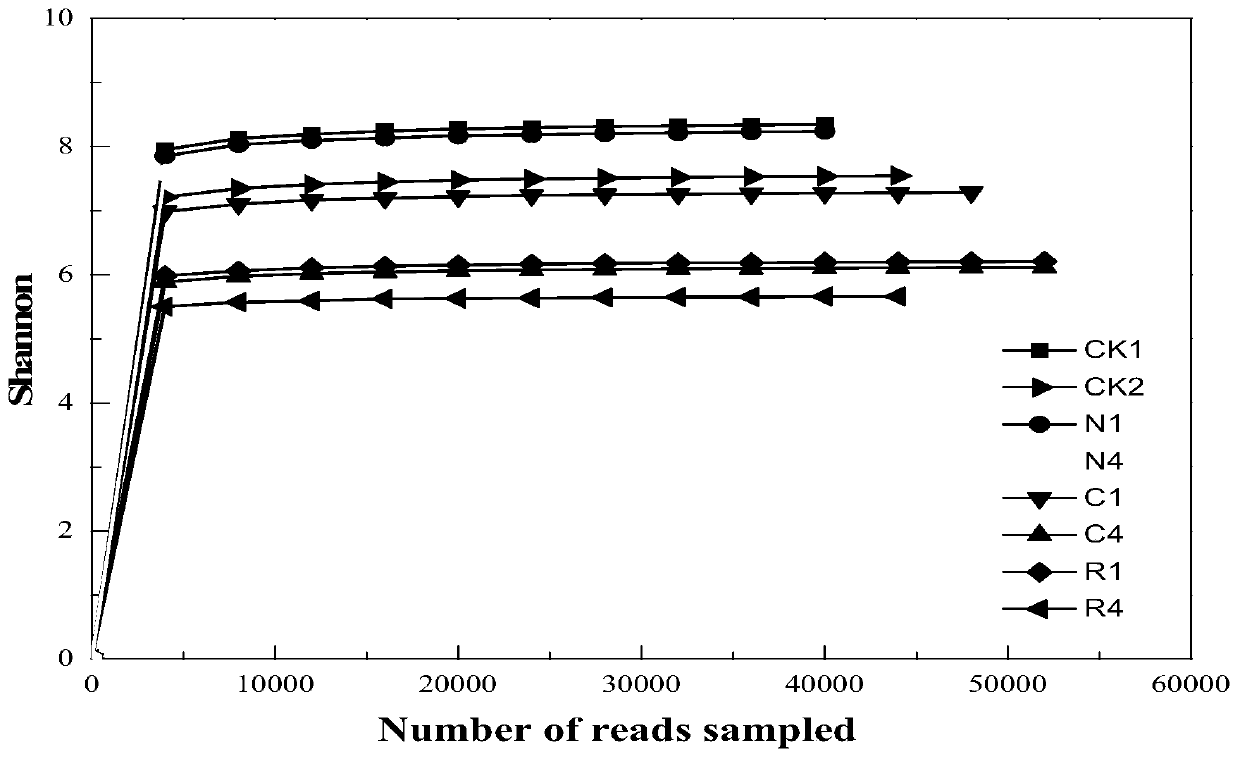Anode photosynthetic solar fuel cell system additionally provided with degrading strain and application thereof
A fuel cell system and fuel cell technology, applied in the field of plant-microbial fuel cells, can solve the problems of low operability, high inactivation rate of a single strain, low possibility of application, etc., and achieve mild reaction conditions and good application Prospect, effect of good degradation performance
- Summary
- Abstract
- Description
- Claims
- Application Information
AI Technical Summary
Problems solved by technology
Method used
Image
Examples
Embodiment 1
[0065] In this example, by analyzing the operation of the anode photosynthetic solar fuel cell (APFSCs) system under different pollution conditions, the anode microbial community of the fuel cell is detected and analyzed, and the degrading bacteria with a large content proportion and a large contribution to the degradation of pollutants are found , to verify the reliability of the added degrading bacteria studied in the present invention.
[0066] This example studies the response of the anode microbial community in an anode photosynthetic solar fuel cell (APFSCs) system under various pollution conditions under natural conditions.
[0067] The soil matrix taken is natural river sediment, and the characteristic pollutants Cr, NO 3 -N experiment groups with different pollutant concentrations to explore their environmental remediation effects.
[0068] Grouping experiments were carried out for different pollution conditions, and the overall experimental grouping conditions are s...
Embodiment 2
[0084] This embodiment provides an anode photosynthetic solar fuel cell system with an external degradative strain, including 1-anode, 2-cathode, 3-typha aquatic plants, 4-resistance, 5-data collector, 6-water body, 7-soil and Testosterone from Trichomonas sp. See the specific device figure 1 .
[0085] The preparation method of the anode photosynthetic solar fuel cell system with the addition of degradative strains in this embodiment comprises the following steps:
[0086] (1) Substrate production: take the soil of the riverside wetland after air-drying, grind and sieve to obtain the substrate for cultivating plants;
[0087] (2) plant material and propagation and cultivation: select cattail aquatic plants and place them in a container filled with sandy soil for cultivation;
[0088] (3) Construct a single-chamber battery anode containing microorganisms: use an opaque and non-conductive container as a reactor, use foamed nickel materials for both the anode and cathode, and...
Embodiment 3
[0093] A method of adding degradative strains designed in this embodiment to promote the decontamination performance of anode photosynthetic solar fuel cells, the cultured Comamonas (Comamonadaceae sp) and Bacillus (Bacillus sp) are inoculated into the microbial fuel In the vicinity of the anode of the battery, in this example, the effect of Comamonadaceae microorganisms and Bacillus sp microorganisms on the power generation and soil decontamination performance of anode photosynthetic solar fuel cells (APFSCs) was studied.
[0094] Select testosterone from Trichomonas, Bacillus megaterium suspension, mixed nutrient solution, buffer solution, stir evenly, and mix into the natural river sediment.
[0095] Specifically, the concentration of testosterone from Trichomonas and Bacillus megaterium suspensions was 7×10 6 cfu / L, nutrient solution components include glucose 1g / L, potassium chloride 0.25g / L, ammonium chloride 0.3g / L, sodium chloride 4g / L, calcium chloride 0.02g / L. The b...
PUM
 Login to View More
Login to View More Abstract
Description
Claims
Application Information
 Login to View More
Login to View More - R&D
- Intellectual Property
- Life Sciences
- Materials
- Tech Scout
- Unparalleled Data Quality
- Higher Quality Content
- 60% Fewer Hallucinations
Browse by: Latest US Patents, China's latest patents, Technical Efficacy Thesaurus, Application Domain, Technology Topic, Popular Technical Reports.
© 2025 PatSnap. All rights reserved.Legal|Privacy policy|Modern Slavery Act Transparency Statement|Sitemap|About US| Contact US: help@patsnap.com



